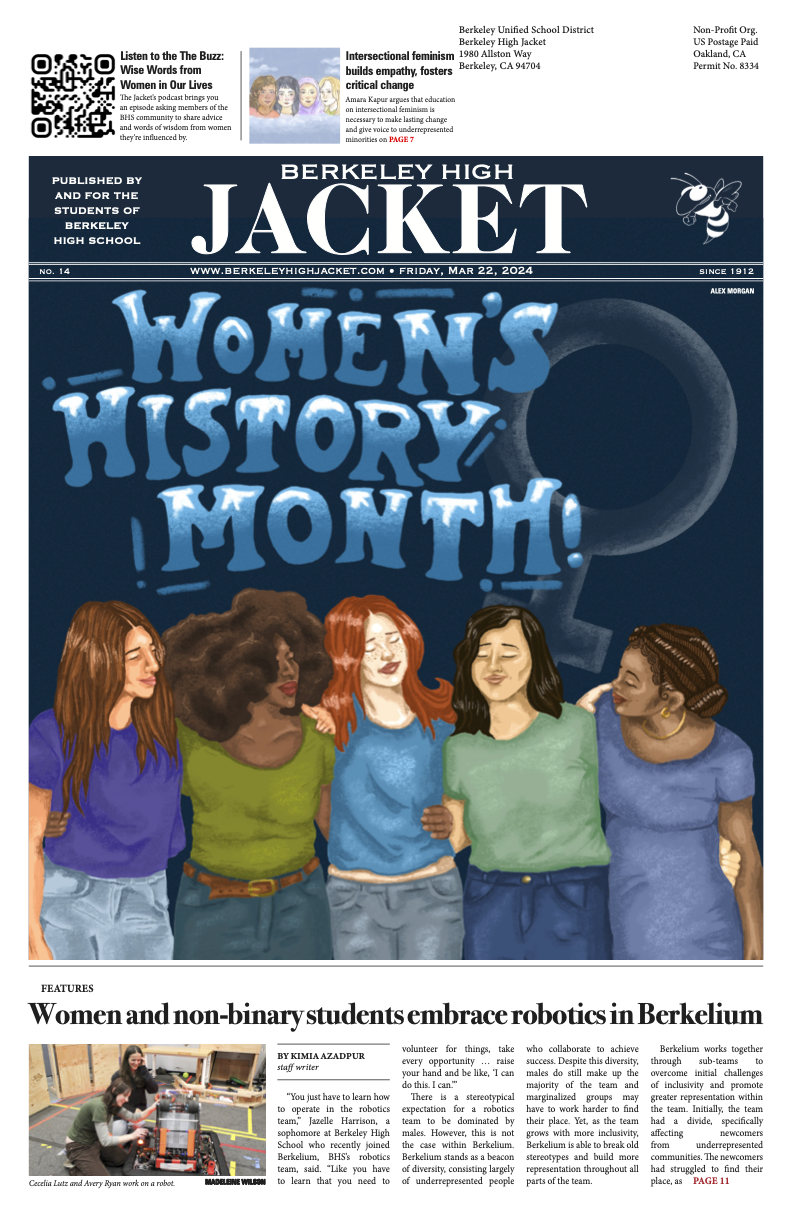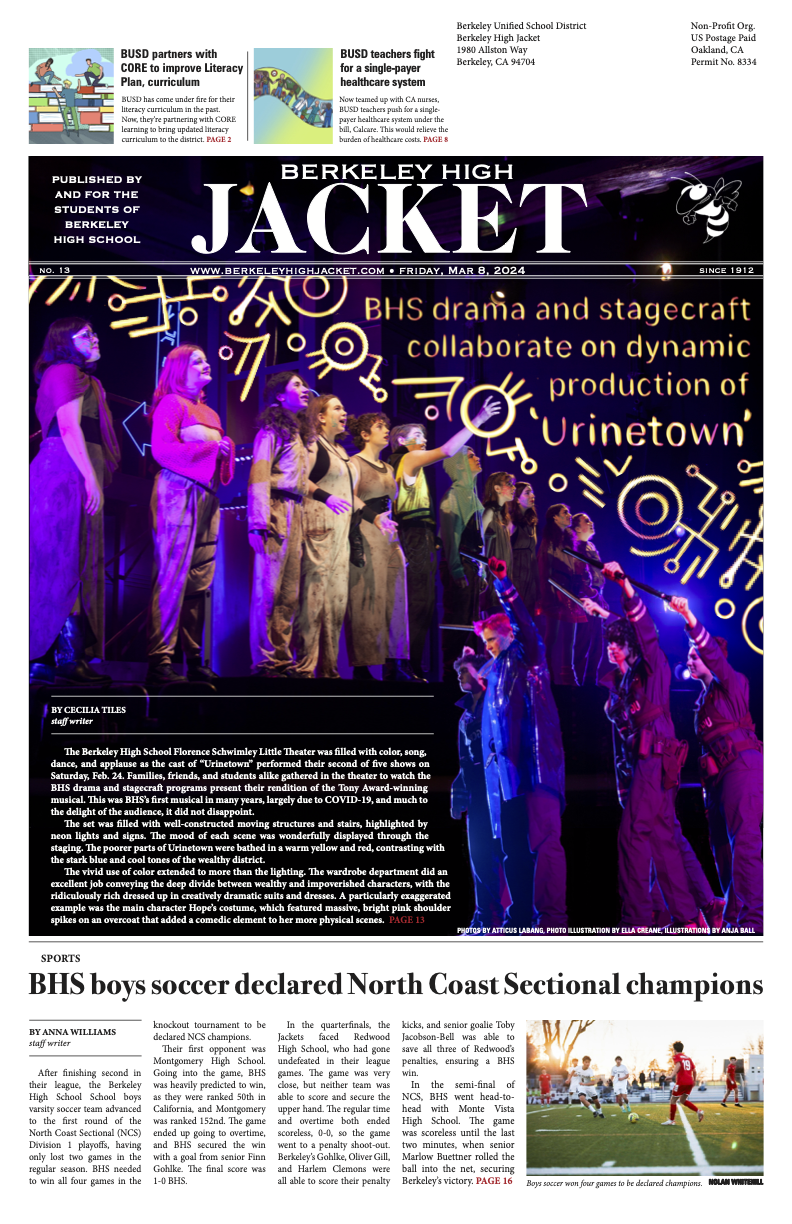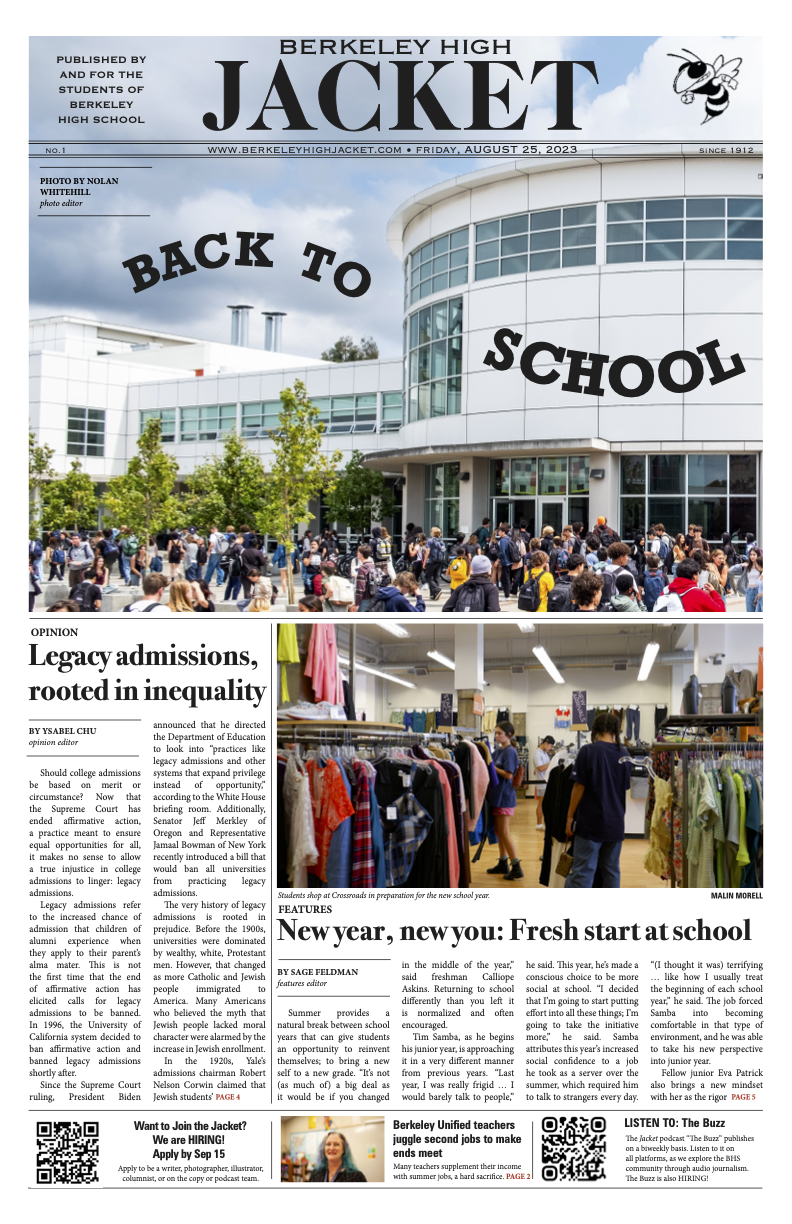Every year, the world produces over 793 trillion pounds of plastic waste and over 200 billion pounds of paper waste — a portion of which come from Berkeley High School’s cafeteria. Even though there will likely be more plastic in the ocean than fish in 2025, the BHS cafeteria still uses disposable paper plates and plastic forks and spoons. BHS must pivot to reusable cutlery and tableware.
Rampant human-driven pollution must cease as to ensure that the Earth remains livable for future generations. BHS should do its part by replacing the plastic and paper tableware in the cafeteria with reusable containers and utensils. This would be an important step in BHS becoming a zero-waste campus.
This would not be uncharted territory, as three other Berkeley Unified School District schools have already implemented reusable tableware in their cafeterias. Because of a dedicated team of students, teachers, administrators, parents, and local organizations, Cragmont Elementary School, John Muir Elementary School, and Martin Luther King Jr. Middle School have all transitioned to reusable foodware. While it costs a significant amount of money in the short term to buy reusable tableware, it will save money in the long term by avoiding the expense of continuously purchasing disposable items that are used once and never again. Cragmont and the other Berkeley schools have demonstrated that this is well within the realm of possibility.
Certainly, there would be some challenges. There is the cost of transitioning to reusable tableware, which would be especially difficult given BHS’ impending eight-million-dollar budget cuts. In addition, all the cutlery would have to be washed, and BHS would need to find the money to purchase multiple dishwashers. Moreover, this would result in increased water use, which would be particularly problematic given California’s history of droughts. Ultimately, however, the plastic and paper waste of disposable foodware outweighs the water used to clean reusable utensils. With water recycling processes put in place, this environmental cost could be lessened even further. The three schools that now use reusable foodware were selected because they already had dishwashers to clean the trays and utensils and enough staff to handle the additional workload. So, BHS would probably have to devote more of its budget to this project compared to what those other schools had to. Nevertheless, BHS has managed to overcome numerous budgetary challenges in the past, such as the recent budget cuts, so it can handle this too.
The world is in peril due to the climate crisis. If pollution continues at current levels, many parts of California, including sections of the Bay Area, will be underwater in a few decades. BHS’ mission is to benefit future generations by educating them, but that will be for nothing if childrens’ futures are destroyed by rising oceans. To do its part for a livable future, it is imperative for BHS to embrace reusables in its cafeteria as soon as feasibly possible.





